How to Launch a Product: The Ultimate Guide for Indie Makers
how to launch a product: So, you’ve built something. You’ve poured countless hours, gallons of coffee, and a piece of your soul into creating a product — learn

So, you’ve built something. You’ve poured countless hours, gallons of coffee, and a piece of your soul into creating a product you believe in. Now what? The silence after you ship can be deafening, especially when you don't have a massive audience or a marketing budget. If you're wondering how to launch a product in a way that actually gets you noticed, you're in the right place. This isn't about expensive ads or complex marketing funnels. It's about a smarter, more organic approach designed for builders, makers, and early-stage founders who want to see real traction from day one.

Table of Contents
- Before You Even Think About Launching: The Pre-Launch Foundation
- Who Are You Actually Building For? Nailing Your Ideal Customer
- Is Your Product a "Vitamin" or a "Painkiller"? Validating Your Value
- Building Your Launch Pad: The Power of a Pre-Launch Waitlist
- The Nitty-Gritty: Your Step-by-Step Guide on How to Launch a Product
- Phase 1: The "Soft Launch" — Your Inner Circle Test
- Phase 2: Crafting Your Launch Story — It's More Than Just Features
- Phase 3: Choosing Your Launchpad — Where to Make Your Big Debut
- Beyond Day One: How to Sustain Momentum After You Launch a Product
- The Feedback Loop: Turning Early Adopters into Co-Creators
- The SEO Snowball: Why Early Backlinks are a Game-Changer
- A Simple Content Strategy to Keep the Buzz Going
- Real-World Examples: Learning from Those Who've Launched
- Case Study 1: The SaaS Tool That Found Its Niche
- Case Study 2: The Solo Dev Who Hit 1,000 Users in a Week
- Common Pitfalls to Avoid When You Launch a Product (And How to Dodge Them)
- Conclusion: Your Launch is Just the Beginning
- Recommended Videos
- Frequently Asked Questions (FAQs)
Before You Even Think About Launching: The Pre-Launch Foundation
A great launch doesn't start on launch day. It starts weeks, or even months, before. Getting this foundation right is arguably the most critical part of understanding how to launch a product successfully. Think of it as building the launchpad before you build the rocket.
Who Are You Actually Building For? Nailing Your Ideal Customer
Before you can figure out how to launch a product, you need to know who you're launching to. It's a simple question that so many builders skip. They get excited about an idea and just start building.
Don't be that person.
Your Ideal Customer Profile (ICP) isn't just a marketing exercise. It's your north star. It helps you decide which features to build, what language to use on your landing page, and where to find your first users.

- Identify Pain Points: What keeps them up at night? What are the annoying, time-consuming tasks they wish they could automate?
- Where Do They Hang Out?: Are they on Twitter, Reddit, specific Slack communities, or LinkedIn? Knowing this is crucial for your launch outreach.
What I'd tell a friend: Just talk to 10 people you think might be your customer. Don't pitch them. Ask them about their problems. If your product doesn't come up naturally as a solution, you might be building something nobody wants. It's a tough pill to swallow, but better now than after a silent launch.
Is Your Product a "Vitamin" or a "Painkiller"? Validating Your Value
Is your product a nice-to-have (a vitamin) or a must-have (a painkiller)? Painkillers solve an urgent, burning problem. Vitamins are for optimization and general improvement. While vitamin products can be successful, painkillers are much easier to sell and, frankly, much easier to launch.
Data from CB Insights consistently shows that the #1 reason startups fail is "no market need." Nearly 38% of failed startups fall into this category. Your job in the pre-launch phase is to prove a market need exists.
How to validate your idea:
- The Smoke Test: Create a simple landing page that explains your product's value proposition. Use a tool like Carrd (https://carrd.co) or Webflow (https://webflow.com).

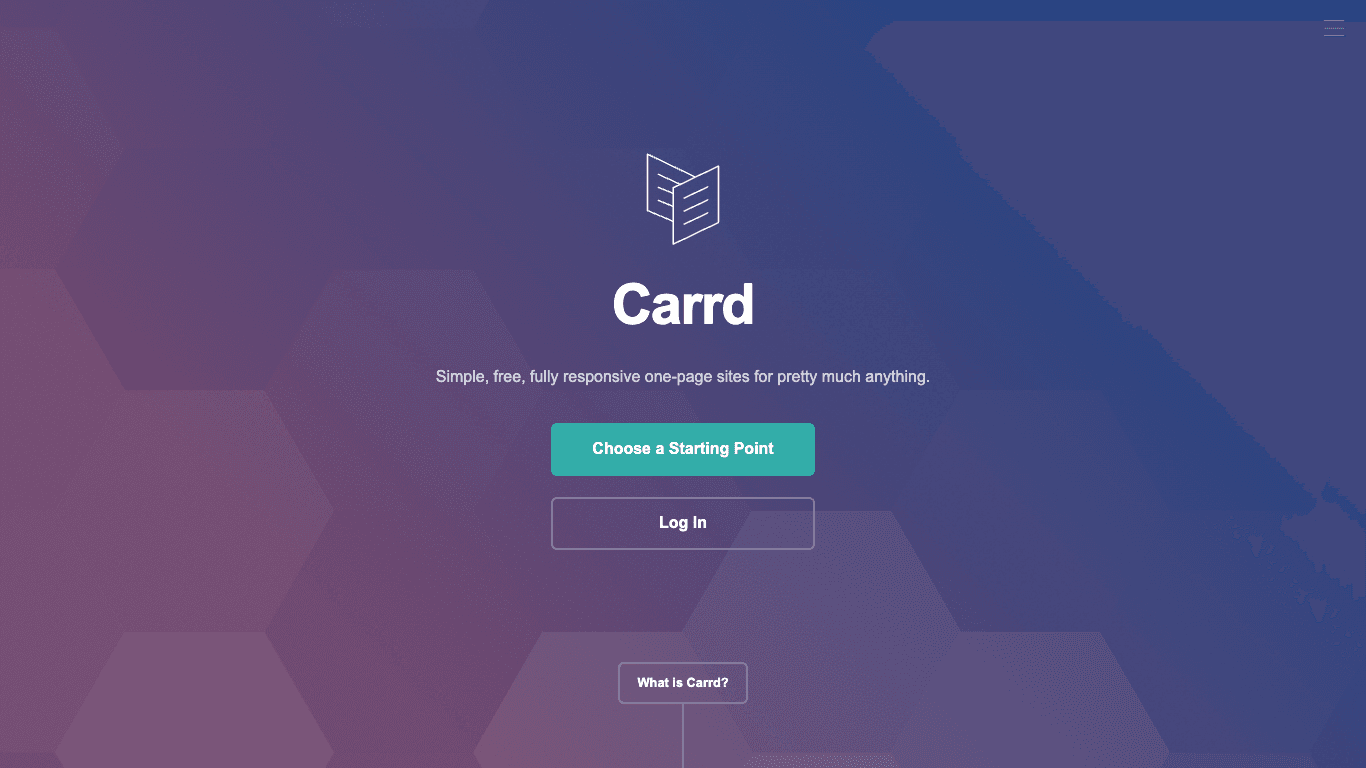
- Drive Traffic: Spend a tiny amount ($50-$100) on targeted ads (Reddit or Twitter can be great for this) or share it in relevant communities.
- Measure Intent: The goal isn't just traffic. It's sign-ups for a waitlist or a "notify me when you launch" list. This is your first real data point. If no one signs up, you have a value proposition problem, not a marketing problem.

Building Your "Launch Pad": The Power of a Pre-Launch Waitlist
Your waitlist is your single greatest asset for a successful launch. It's a group of people who have explicitly raised their hands and said, "I'm interested." These are your future first users, your first feedback providers, and your first evangelists.
Don't just collect emails. Engage with your waitlist.
- Send occasional updates (once every 2-3 weeks is fine).
- Ask them questions and polls about potential features.
- Give them a sneak peek or behind-the-scenes look at your progress.
This builds a relationship before you ever ask them for anything. When launch day arrives, you're not emailing a cold list; you're contacting a group of supporters who are already invested in your journey.
Actionable Tip: Ready to start building your audience before you even launch? Platforms like ShipSquad are designed to connect you with early adopters who are actively looking for new products to try. It's a great way to get early eyes and feedback, even with just a landing page.
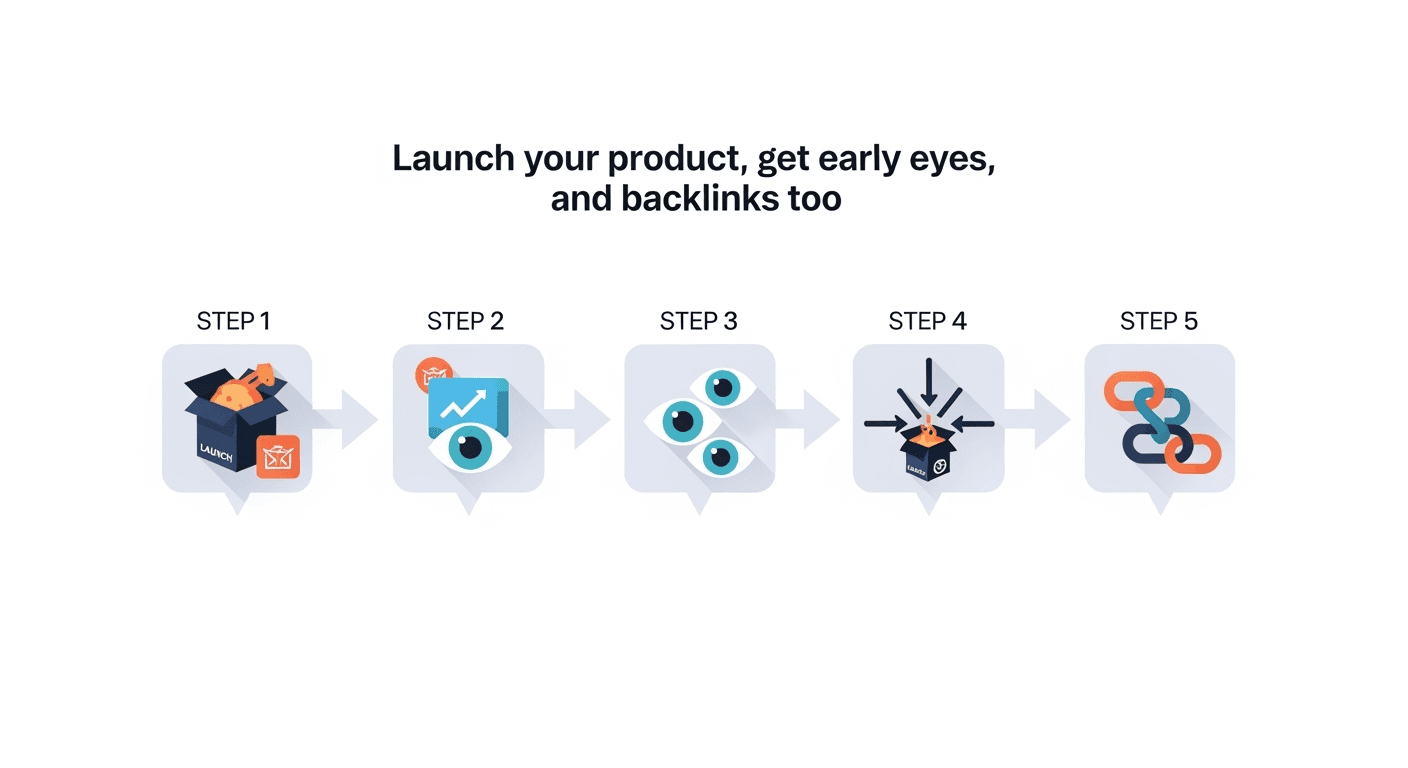
The Nitty-Gritty: Your Step-by-Step Guide on How to Launch a Product
Alright, your foundation is solid. You know who you're targeting, you've validated the problem, and you have a small but engaged waitlist. Now, let's get into the mechanics of how to launch a product.
Phase 1: The "Soft Launch" — Your Inner Circle Test
Before you announce your product to the world, do a "soft launch" with a small, trusted group. This could be:
- People from your waitlist.
- A handful of friendly folks from an online community.
- Friends who fit your ICP (be careful with this, as they might not give you brutally honest feedback).
The goal here isn't to get a flood of users. It's to find the bugs, fix the confusing UI, and make sure your onboarding process doesn't completely fall apart. This is your dress rehearsal. It helps you iron out the kinks so you can put your best foot forward for the main event.
Phase 2: Crafting Your Launch Story — It's More Than Just Features
People don't connect with features; they connect with stories. Why did you build this? What problem frustrated you so much that you decided to dedicate your time to solving it? Your launch announcement shouldn't be a dry list of what your product does. It should be a compelling narrative.
Your story should have three key elements:
- The Problem: Describe the pain point in a relatable way.
- The "Aha!" Moment: What was the insight that led you to your solution?
- The Solution: How does your product solve the problem in a unique or better way?
This story will be the core of your launch day posts, your emails, and your landing page copy. It's what makes people care.
Phase 3: Choosing Your Launchpad — Where to Make Your Big Debut
Where you launch is just as important as what you launch. The right platform can put you in front of thousands of potential users. The wrong one can lead to a launch that fizzles out.
Here are a few popular options:
- Product Hunt (https://www.producthunt.com): The go-to for many tech products. It has a large, engaged audience of early adopters. A successful launch here can drive thousands of visitors.
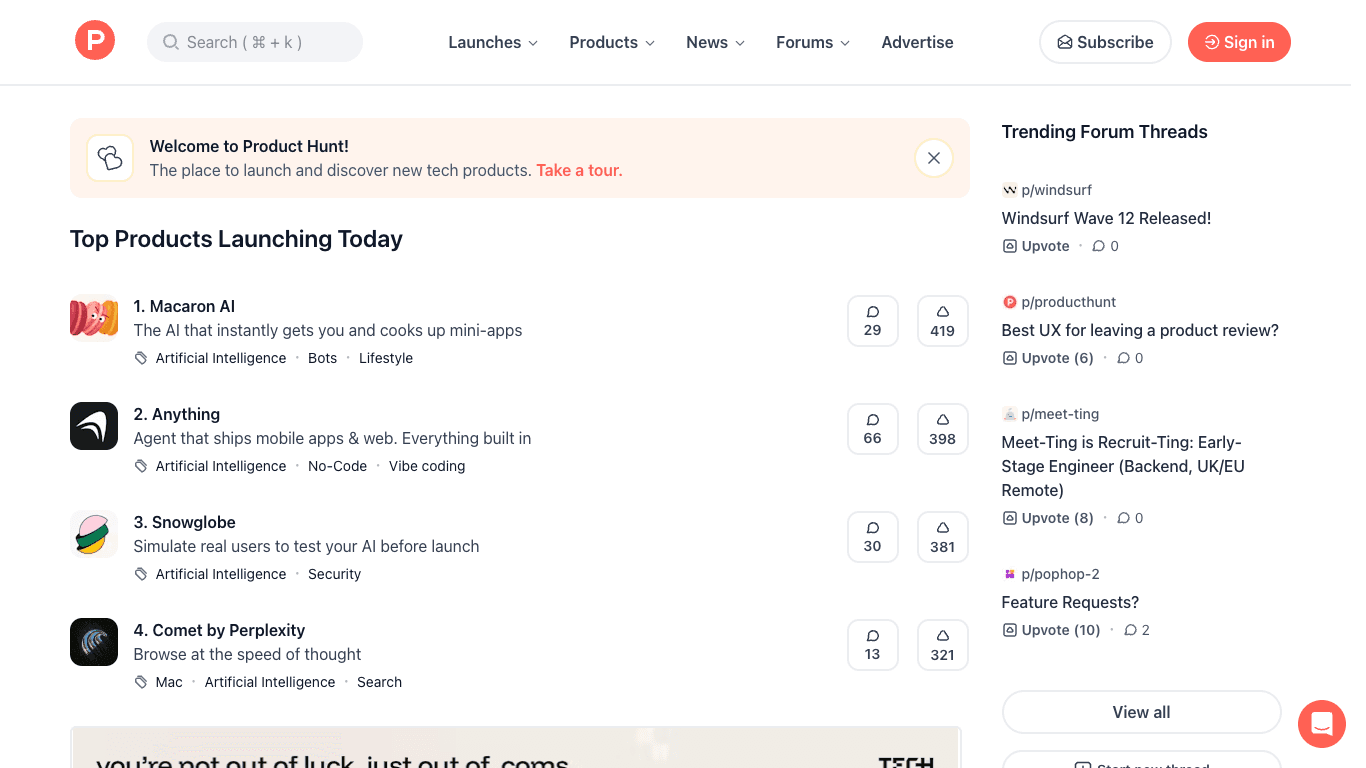
- Hacker News (https://news.ycombinator.com): A more technical audience. If your product is for developers or has a strong technical angle, a "Show HN" post can be incredibly powerful.
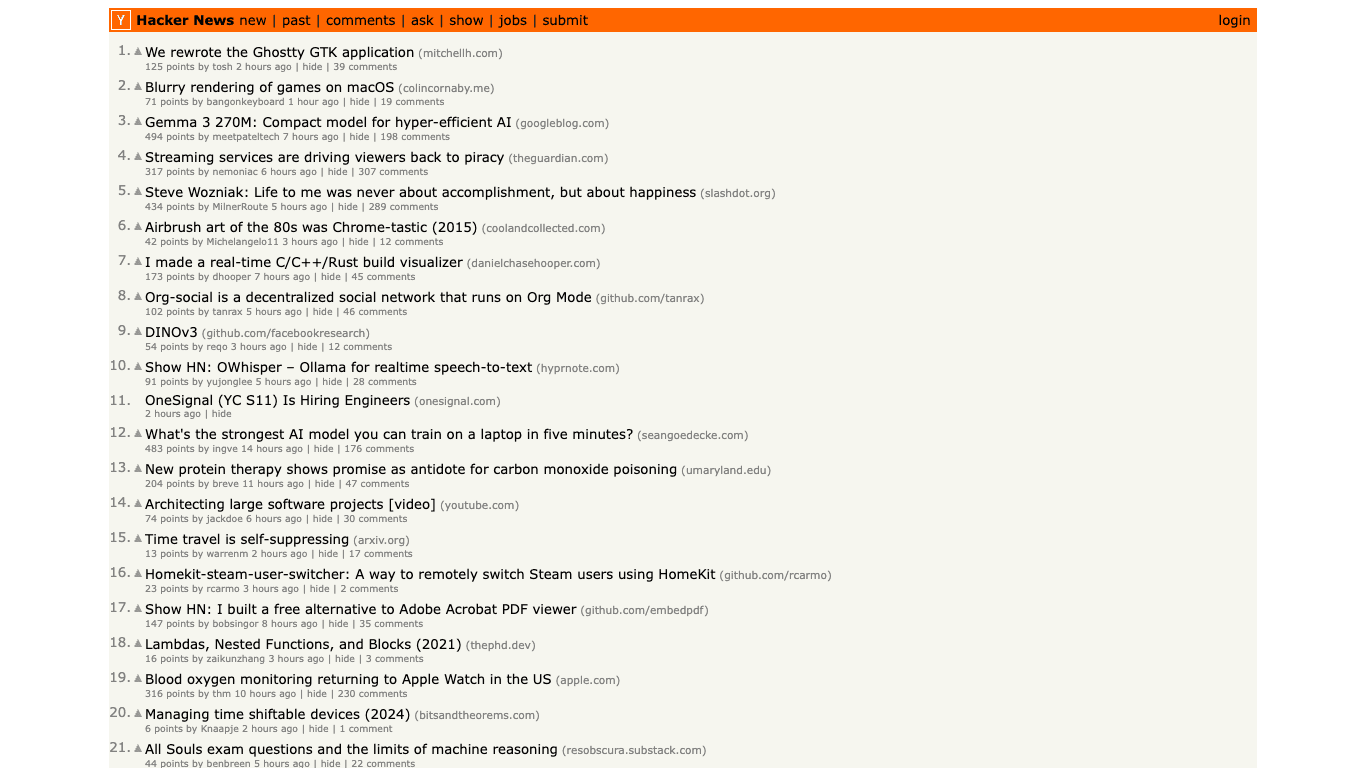
- Niche Communities (Reddit, Indie Hackers, etc.): Don't underestimate the power of subreddits or communities dedicated to your specific niche. The audience is smaller but often much more targeted and passionate.
The challenge? These platforms are crowded. Standing out is tough, and they don't always contribute to your long-term goals, like SEO. A launch on Product Hunt is great for a one-day spike, but what about next week? Or next month?
This is where a different approach can be a game-changer. Imagine a platform where your launch not only gets you initial visibility but also helps your website's authority with a valuable backlink. For an indie maker, a single high-quality backlink can be more valuable in the long run than a temporary traffic spike.
| Criteria | Option A | Option B | Option C |
|---|---|---|---|
| Fit | Good | Better | Best |
| Cost | Low | Medium | High |
| Complexity | Low | Medium | High |
| *** |
Beyond Day One: How to Sustain Momentum After You Launch a Product
So many founders focus all their energy on launch day. But the truth is, the real work starts after you launch. Learning how to launch a product is also about learning how to keep the ball rolling.
The Feedback Loop: Turning Early Adopters into Co-Creators
Your first users are a goldmine of information. They will show you what's working, what's broken, and what's missing.
- Make it Easy to Give Feedback: Use a tool like Canny (https://canny.io) for feature requests or simply have a visible "feedback" link in your app.

- Talk to Them: Reach out personally to your first 20-50 users. Ask them for 15 minutes of their time to chat about their experience. What you learn will be invaluable.
- Close the Loop: When you fix a bug or build a feature someone requested, let them know! This simple act turns a user into a loyal fan.
The SEO Snowball: Why Early Backlinks are a Game-Changer
Search Engine Optimization (SEO) can feel like a long, complicated game. But it starts with one simple thing: backlinks. A backlink is a link from another website to yours. Search engines like Google see these as votes of confidence.
Recent research from Backlinko shows a direct correlation: the more backlinks a page has, the more organic traffic it gets. For a new product, getting those first few backlinks is the hardest part.
This is why launching on a platform that provides a quality backlink is so powerful. It kickstarts your "SEO snowball."
- Initial Backlink: Your launch gives you your first vote of confidence.
- Increased Authority: This helps Google see your site as more credible.
- Better Rankings: You start to rank for relevant keywords.
- More Traffic: People discover you through search.
- Natural Backlinks: Other sites find your useful content and link to it naturally.
It's a virtuous cycle, and it all starts with that first push.
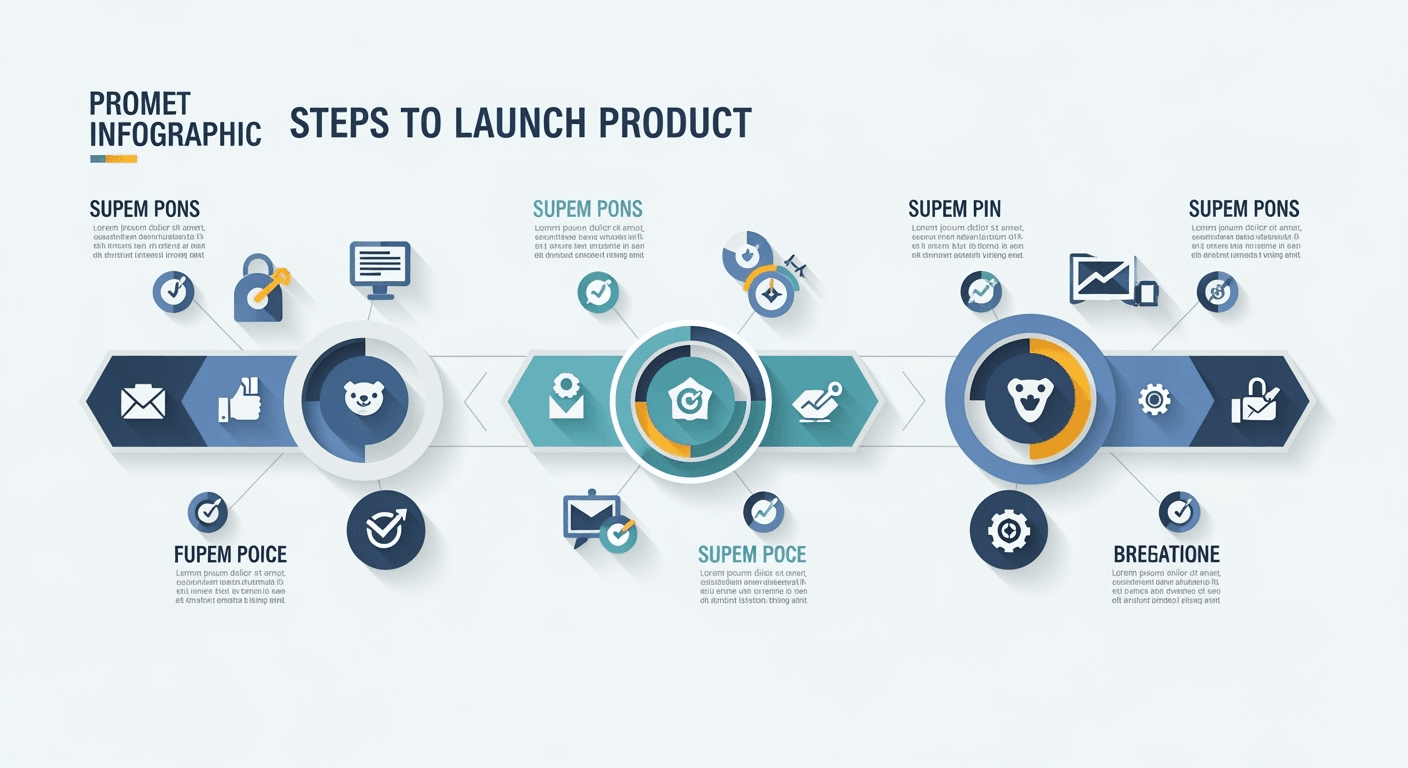
A Simple Content Strategy to Keep the Buzz Going
You don't need a massive blog. Just start by answering the questions your users are asking.
- Write a guide on how to use a specific feature of your product.
- Create a tutorial on how to achieve a certain outcome using your tool.
- Share the story of how a customer is using your product successfully (with their permission, of course).
Each piece of content is another asset that can attract users and earn backlinks over time.
Real-World Examples: Learning from Those Who've Launched
Theory is great, but let's look at how this works in the real world.
Case Study 1: The SaaS Tool That Found Its Niche
Meet "FinanSync," an anonymized budgeting app for freelancers. The founder, Alex, initially built it with tons of complex features for all small businesses.
- The Challenge: His pre-launch waitlist sign-ups were abysmal. The feedback was that it was "too complicated" and "trying to do too much."
- The Solution: Alex took the feedback to heart. He did a soft launch with just 15 freelance designers from his network. They told him they didn't need 90% of the features. They just wanted a dead-simple way to track project income and estimate quarterly taxes.
- The Result: Alex stripped the product down to its core. He re-launched on a few niche subreddits for freelancers with the headline "A budgeting app that only does two things." The targeted messaging resonated. He got his first 100 paying customers within a month, and user retention improved by 60% because the product perfectly solved a specific, painful problem.
Case Study 2: The Solo Dev Who Hit 1,000 Users in a Week
"CodeSnippets.io" was a simple tool built by a solo developer, Maria, to save and share code snippets. She had no audience and no budget.
- The Challenge: How to get noticed in a crowded market of developer tools?
- The Solution: Maria focused entirely on community-led launches. She did a "Show HN" on Hacker News and posted in relevant developer communities. Crucially, she also submitted her project to several new product directories that provided permanent backlinks.
- The Result: Her Hacker News post hit the front page, driving over 1,000 sign-ups in the first 48 hours. But the real win came later. The handful of backlinks she got from the directories helped her site start ranking for long-tail keywords like "shareable python code snippets." Six months later, 70% of her new users were coming from organic search, not launch day spikes. This shows how a smart launch can build a sustainable growth channel.
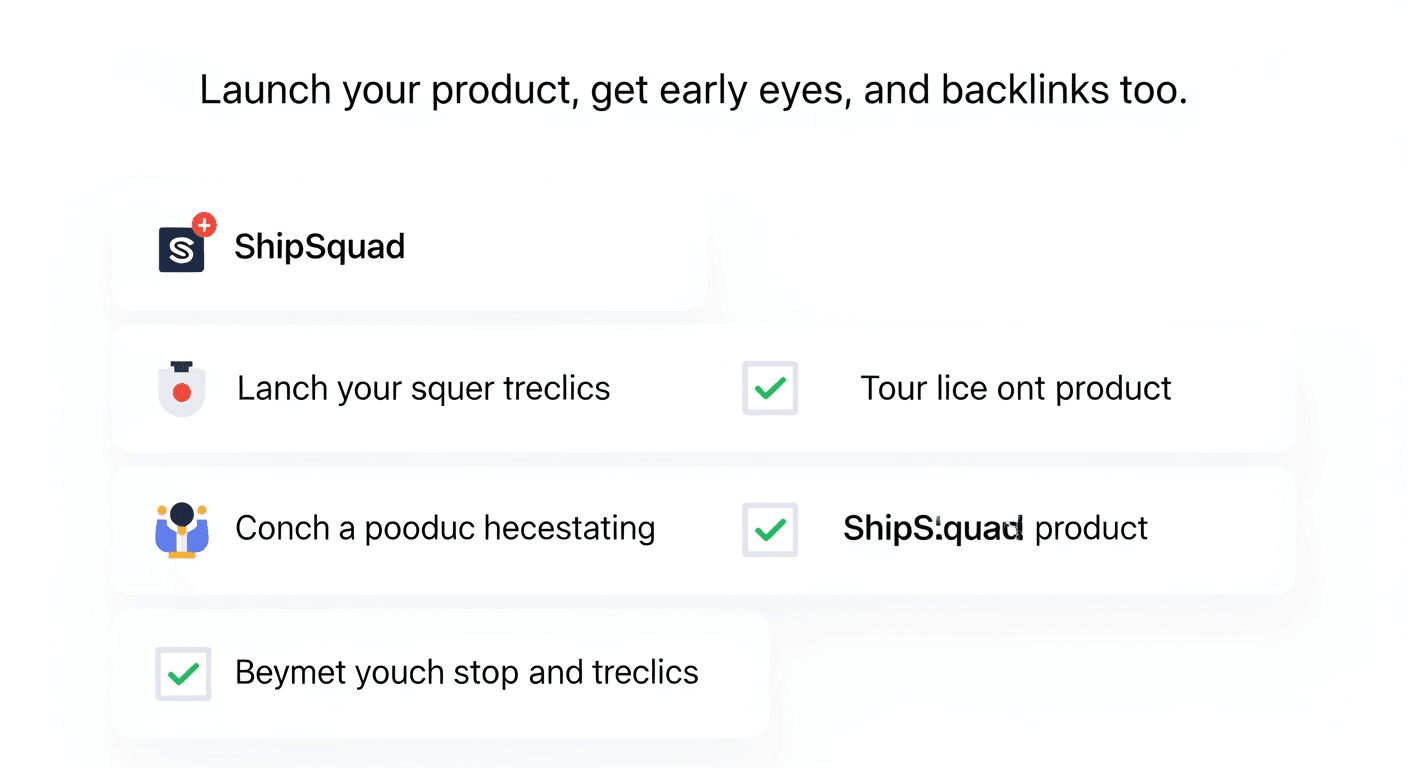
Common Pitfalls to Avoid When You Launch a Product (And How to Dodge Them)
It's easy to make mistakes. Here are a few common ones to watch out for:
- The "Build it and they will come" Fallacy: This is the most dangerous mindset. You must be proactive in finding your first users.
- Launching Without a Plan: Don't just wake up one day and decide to launch. Have a checklist, prepare your materials, and know where you're going to post.
- Ignoring Early Feedback: Your first users are giving you a roadmap to a better product. Don't get defensive; get curious.
- Focusing Only on Launch Day: The launch is a moment in time. Your business is a marathon. Think about how your launch activities will set you up for success in the months to come.
- Being a Perfectionist: Your V1 will never be perfect. It's better to launch a 70% complete product that solves a real problem than to wait a year for a 100% complete product that nobody wants.

Conclusion: Your Launch is Just the Beginning
Learning how to launch a product isn't about finding a secret hack for instant success. It's about a thoughtful process: understanding your customer, validating your idea, telling a compelling story, and choosing a launch strategy that builds for the future.
For indie makers and early-stage founders, the odds can feel stacked against you. You don't have the budget or the brand recognition of a big company. But you have something they don't: agility, a direct connection to your users, and the ability to be smart and strategic.
Don't just launch your product into the void. Give it the best possible start by building an audience before you launch and choosing a platform that gives you the visibility, feedback, and the long-term SEO value you need to grow.
Ready to get your product in front of eager early adopters and build your SEO foundation from day one? ShipSquad is a free platform designed for indie builders to launch products, get discovered, and earn quality backlinks. Launch smarter, not harder.
Recommended Videos
- How to Launch a Product or Service by Y Combinator
- The Single Biggest Reason Why Startups Succeed by Bill Gross
Frequently Asked Questions (FAQs)
1. How much does it cost to launch a product?
For a software product, the cost can be close to zero if you're a developer. The biggest "cost" is your time. You can use free or low-cost tools for landing pages, email lists, and analytics. Launch platforms like ShipSquad, Product Hunt, and Hacker News are free to post on.
2. How long should my product launch last?
Think of a launch not as a single day, but as a "launch window" of about a week. You might post on Product Hunt on Tuesday, Hacker News on Wednesday, and niche communities on Thursday. The goal is to build and sustain buzz for a few days, not just a few hours.
3. What if my launch fails?
First, define "failure." If you mean you didn't get 10,000 users overnight, that's not a failure; that's normal. A launch is a data-gathering exercise. If you get zero sign-ups and zero interest, that's valuable data. It tells you that you have a problem with your product, your messaging, or your target audience. It's an opportunity to learn, pivot, and try again.
4. How many people do I need on my waitlist before I launch?
There's no magic number. Having 50 highly engaged people who fit your ICP is far more valuable than 1,000 random email addresses. Focus on quality over quantity. Even a list of 20-30 people is enough for a soft launch to gather critical feedback.
5. How do I get my first backlink if my site is new?
This is the classic chicken-and-egg problem. The best way is to create something worth linking to. This can be your product itself, a useful free tool, or a high-quality blog post. Another strategic way is to launch on platforms that are specifically designed to help new products get discovered and provide a backlink as part of the listing.
6. Should I charge for my product from day one?
It depends, but for most SaaS products, the answer is yes. Charging, even a small amount, is the ultimate form of validation. It proves that people find your product valuable enough to pay for it. If you're nervous, you can offer a free trial or a launch-day discount, but don't be afraid to ask for money.